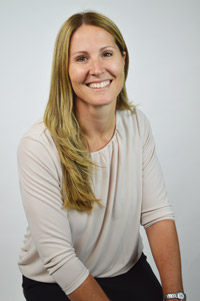 Almost two years after COVID-19 emerged, there’s still much that isn’t fully understood about the coronavirus. But it’s become clear that about 1 in 10 infected people will go on to experience lingering health problems 12 or more weeks after first becoming ill.
Almost two years after COVID-19 emerged, there’s still much that isn’t fully understood about the coronavirus. But it’s become clear that about 1 in 10 infected people will go on to experience lingering health problems 12 or more weeks after first becoming ill.
This phenomenon, dubbed “long COVID,” can involve a combination of symptoms such as shortness of breath, cough, tiredness, headache, brain fog and chest, joint or muscle pain, among others, according to the U.S. Centers for Disease Control and Prevention (CDC).
“Long COVID doesn’t have one classic presentation—everyone is unique,” says Pamela Randolph, PT, DPT, MBA, FACHE, Director of Rehabilitation Services at Robert Wood Johnson University Hospital Hamilton. “We modify treatment plans to make them specific to each patient.”
Dr. Randolph explains more about long COVID and how rehabilitation can help move patients toward a full recovery.
What are the most common challenges people with long COVID face?
These patients can’t navigate life without feeling exhausted. We’re trying to get them back to baseline and then back to doing the physical things they used to do. Some do fine in their home but can’t exercise like they used to. But a lot of people with long COVID don’t understand their symptoms or even know there’s something they can do about them.
What can they expect in terms of recovery?
Everyone is individual, and what to expect is very hard to pinpoint. We had one patient with COVID-19 hospitalized here for more than 70 days, so their weakness level was extreme. Others who haven’t been hospitalized have fewer obstacles to recovery. Many long COVID patients continue having breathing difficulties, but rehab also touches on aspects of recovery such as nutrition, sleep and stress.
How can rehabilitation help?
The goal with medical management of COVID is to optimize function and quality of life. That’s what we do in rehab—it’s truly our sole purpose. Depending on each patient’s situation, we work on walking, balance, strength and endurance. We also teach them breathing exercises. We meet them where they are and work toward their individual goals.
Why is it important for long COVID patients to follow up with their doctors?
It takes a whole team to get people back to where they need to be. Our physical therapists work with physicians here to figure out what else patients may need, whether that’s more rehab, a sleep workup or nutritionists to help them get their appetite back. Rehab is only one cog in the whole wheel. People who aren’t able to do what they expect after having COVID should reach out to their physicians so we as a team can see what their needs are.
To learn more about rehabilitation at Robert Wood Johnson University Hospital Hamilton, call 87.REHAB.RWJ (877.342.2795) or visit www.rwjrehab.com.